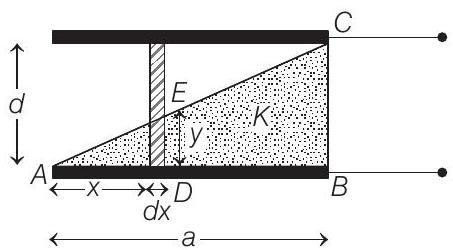Electrostatics 5 Question 15
17. A charged particle is free to move in an electric field. Will it always move along an electric line of force?
(1979)
(d)
Show Answer
Solution:
- Let’s consider a strip of thickness ’

We know that, the capacitance of parallel plate capacitor,
Here, two capacitor are placed in series with variable thickness, therefore
Now, integrate it from 0 to
Using Eq. (i),






